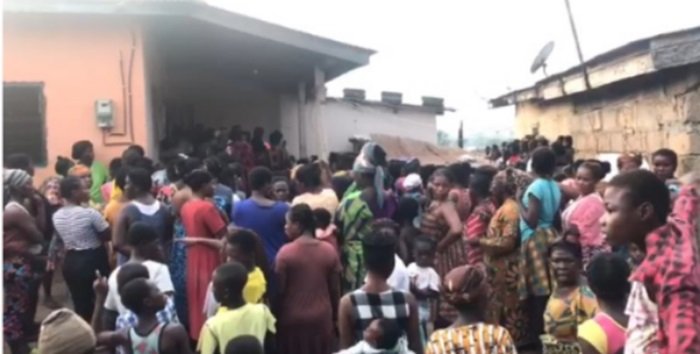Stories of people coming “back to life” after being declared dead are dramatic, often viewed with skepticism, wonder, or fear.
In contexts where medical infrastructure is stretched thin, such reports acquire legendary status. The alleged case at Gomoa Nyanyano, where a woman reportedly rose from death and then died again, has stirred emotions and debate.
Whether entirely factual or partly exaggerated, this story brings into sharp focus deeper systemic issues: medical misdiagnosis or delays, lack of standardized protocols, cultural beliefs about life and death, and the responsibility of health systems and communities to handle crises with dignity and skill.
A 30-year-old woman, identified as Sister Aba, has reportedly died a second time after allegedly rising from death at Gomoa Nyanyano in the Gomoa East District of the Central Region.
Family sources said the woman unexpectedly regained consciousness while relatives were preparing her body for burial.
She was rushed to the Kasoa Mother and Child Hospital, where she passed away again while receiving treatment.
The Assembly Member for the Upper Nyanyano Electoral Area, Isaac Quansah, confirmed the incident, noting, “Medical officers have confirmed the second death of the victim while she was on admission.”
Meanwhile, a relative of the deceased and Head of the Kona Family of Gomoa Nyanyano, Nana Mbreye, dismissed reports that Sister Aba’s death was linked to electrocution. “It is not true that she died through electric shock,” he clarified.
Ghana, like many countries in Sub‑Saharan Africa, has regions where medical facilities are under‑resourced. Emergency response systems, diagnostic tools, trained personnel, and ambulance services are often less available or slower in rural or peri‑urban areas.

Delays in recognizing critical signs, or in transporting patients to appropriate centers, exacerbates conditions.
In many Ghanaian communities, beliefs about death, spirits, and resurrection remain strong. These beliefs interact with medical realities in ways that complicates public understanding. Sometimes, when a person is declared “clinically dead” prematurely or without complete diagnostic confirmation, rumours and interpretations emerge.
Media and community reports sometimes rely on anecdote rather than verified medical documentation. Also, for families, the lines between hope, grief, and factual truth blurs, making it harder to distinguish myth from medical error or miscommunication.
Hospitals and clinics must have protocols to confirm death, checking pulse, breathing, brain activity (when possible), before declaring someone dead. Mistakes here have devastating consequences, emotionally, socially, and possibly legally.
Ensuring rapid access to emergency medical transportation, properly equipped ambulances, and prompt treatment reduces incidents of delayed care, which might give rise to reports of “resurrection.”
Possible Objections and Considerations
Some argue that the story is sensationalized, exaggerated, or spurred by superstition. While that might be so, ignoring it is dangerous and it contributes to misinformation, fear, and distrust.

Others also argue resources are limited, and spending on diagnostic protocols or monitoring devices are less urgent compared to other pressing health issues. But this kind of mistake (if it is a mistake) has high cost: to human life, to social trust, to reputation of health institutions.
There will always be belief systems that interpret death or “resurrection” differently; any strategy must be sensitive to cultural belief, avoid dismissiveness, instead combine scientific clarity with respect.
Call to Action
The alleged event in Gomoa Nyanyano of a woman rising from death and dying again is shocking. But more than the sensationalism, it reveals gaps, medical, logistical, and cultural that need urgent attention.
If Ghana, and similar societies, want to minimize tragedies, protect dignity in life and death, and retain faith in their health systems, then action is needed.
By bolstering diagnosis protocols, improving emergency care, educating the public, ensuring accountability, and investing in infrastructure, health practitioners ensure that such distressing stories become far less common.
Death should not be mishandled, and life, when possible, should not be prematurely given up on. To do better is both a moral and civic imperative.
READ ALSO: EC Declares NDC’s Alidu Seidu Winner in Tamale Central By-Election






















